by Craig
Dorman
|
(click on images to enlarge)
COLLECTING SILVER COW CREAMERS
It's not often that silver items start a "craze" that leads
to massive production of similarly shaped pottery items... but
that's what happened in the late 1700s when John Schuppe, a
Dutch silversmith transplanted to London, popularized silver cow
creamers (later immortalized by P.G.Wodehouse in the Code of the
Woosters, the first of the Totleigh Towers saga, where Jeeves
saves the cow creamer). I had been fascinated by cow creamers
ever since I had a simple china one as a small boy (my mother
disdained from putting anything as gauche as a milk bottle on
the table) and had started a modest and inexpensive collection,
but I didn't know anything about their origin and 18-19c
popularity until I lived in London in the mid 90's and visited
the Victoria and Albert Museum. Three Schuppe creamers were on
display, and then one day in the silver vaults I found one I
could buy and learned a bit more about their history (and
current value) from the knowledgeable vendor. So now I have over
65 silver cow creamers and am always on the lookout for more.
Since silver was and is expensive, the silver cow creamers'
popularity morphed into ceramic versions so folks "downstairs"
could share the propensity of those "upstairs" for having a spot
of milk or cream, properly served, with their tea. The main
British potteries at the time (even now) were in Staffordshire,
and by the early 1800s they were churning out ceramic cow
creamers by the hundreds. These were utilitarian as opposed to
purely decorative items so most of them have suffered
considerable damage over the years, although they have increased
considerably in value and many of the early ones, as well as the
fancier ones from the Victorian era, rival the silver cows in
price. The superb Keiller collection of 600+ of them can be
viewed (about 200 at a time) at the Stoke-on-Trent Museum and
Art Gallery.
Schuppe of course didn't saturate the silver cow market, so many
other Dutch, then German and other continental silversmiths
started to fashion them, although primarily for export to
England. Many of them were and even still are modeled after
Schuppe’s – two signature items being the scrawny legs and the
accompanying fly on the lid. Over time however a wide range of
forms and sizes have emerged and I'll confess to adding to the
diversity with a couple of my commissions. I've included a few
examples here, and there are many more – as well as cow creamers
(and cow teapots, pitchers, suiteki etc.) of various other forms
and materials plus some additional historical information, on my
web site, http://cow-creamers.net. I would also note that like
many collectors, I have a number of pieces with marks that I
haven't been able to identify... so I hope to take advantage of
ASCAS members for a bit of help from time to time.
This is one of Schuppe's originals – and her marks for London
1768. Accompanying her is a "herd" where she's joined by another
original and three copies from London silversmiths, dating from
1958 and 2002. Incidentally, that's a US quarter used to show
size.
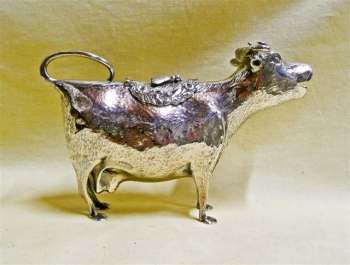 |
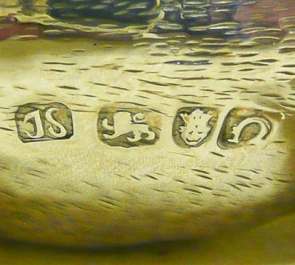 |
John Schuppe's silver cow creamer
|
Sterling Silver hallmark: John Schuppe, London,
1768
|
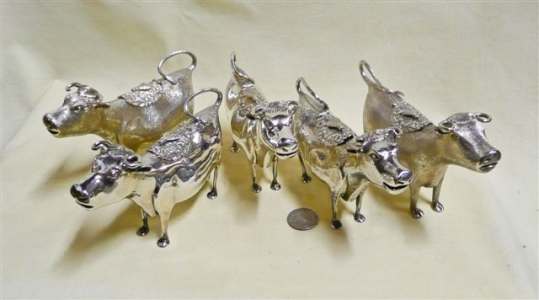 |
A "herd" of cow creamers: two ancient John
Schuppe's silver cow creamers accompanied
by three modern copies bearing hallmarks of London
silversmiths from 1958 to 2002
|
Here's another modern take-off on the theme, Dalina and her
marks including the 2002 Queen Elizabeth Jubilee mark, crafted
for me by British silversmith Veronica Jane Shaw.
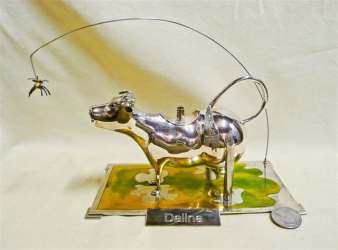 |
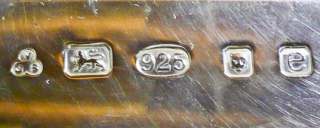 |
A modern cow creamer:
silversmith Veronica Jane Shaw
|
Sterling Silver hallmark:
Veronica Jane Shaw, London, 2002
|
This one, with the Schuppe-like legs but distinctive horns
and a fly that's taking off, is Dutch, marked for Herbert
Hooijkaas of Schoonhoven (the M on the Minerva's head is the
local assay office mark) and dates from 1951. It's .833 silver
made for export if I've read the marks correctly.
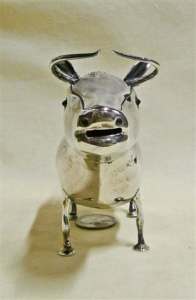 |
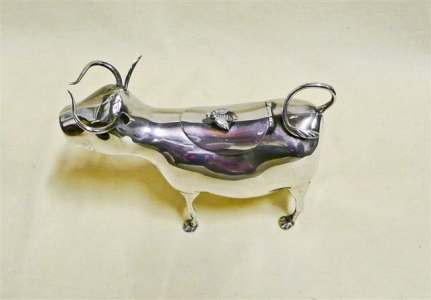 |
A Dutch cow creamer
|
.
|
 |
Dutch silver hallmark: Herbert Hooijkaas of
Schoonhoven
|
These two 20th century German cows show the range of sizes
in my collection. I've included their marks since I've not been
able to identify the makers – the little guy with red eyes is by
"B&Z" (I have several small ones by this silversmith) and the
larger one simply features the left side of a pacing lion (or
tiger?) as well as the post-1886 "Halbmund und Krone". Since
both are impressed "GERMANY" in English script, I'd expect they
were made for export. Help here would be greatly appreciated.
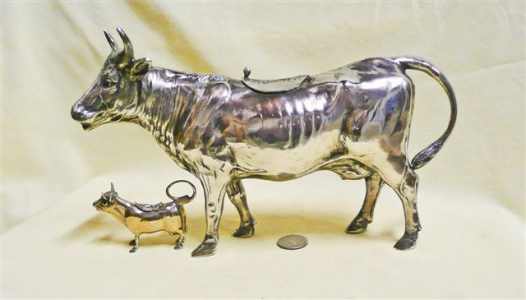 |
Two German cow creamers
|
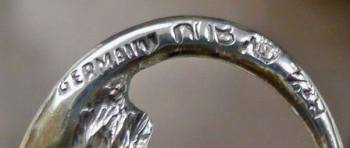 |
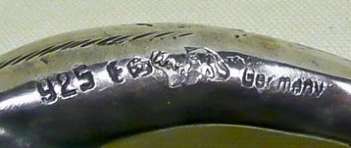 |
Marks on German cow creamers
|
.
|
Some gender-confused bulls give milk, too; this one bears
another German mark that I’ve not been able to identify.
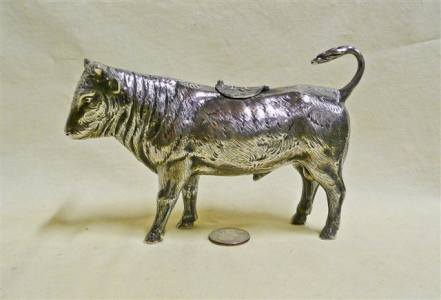 |
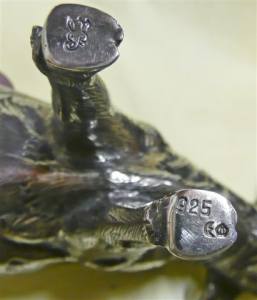 |
Another German "cow" creamer
|
Marks on German "cow" creamer
|
Finally for this first installment, since ASCAS hails from
Italy, I've included this little beauty that comes from
the firm of Giuseppe Belfiore of Firenze which was founded in
1948 and is now run by his son and daughter (see
www.belfiore.it)
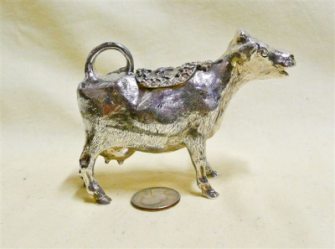 |
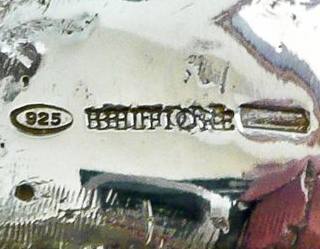 |
An Italian cow creamer
|
Belfiore mark on Italian cow creamer
|
|
Craig Dorman
- 2012 -
|
Craig Dorman's collection of cow creamers now numbers
somewhere well over a thousand and continues to grow, weekly if
not daily.
In this page Craig presents some of his silver cow creamers,
ancient and modern.
He trusts on the help of ASCAS' members to identify the makers
of some silver pieces on his collection.
A wider illustration of Craig's collection is presented at
http://cow-creamers.net
|
|
 ASSOCIATION OF SMALL COLLECTORS OF ANTIQUE SILVER
ASSOCIATION OF SMALL COLLECTORS OF ANTIQUE SILVER













